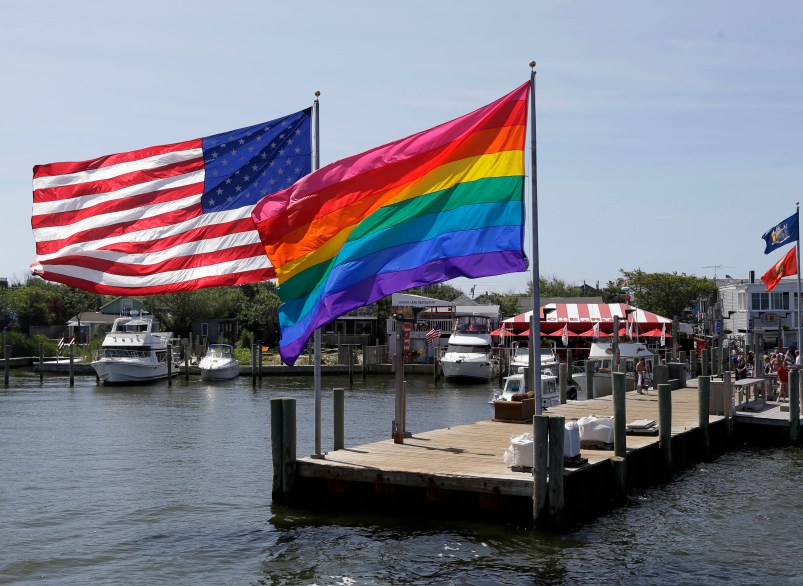One of the most persistent issues surrounding abortion—and reproductive rights in general—is that of stigma. Stigma is everywhere you look in the abortion debate; it influences every talking point of the anti-choice movement but also crops up in conversations among people that consider themselves more neutral or even pro-choice when it comes to abortion rights. “Sure, I support abortion, but women shouldn’t use it as birth control.” “Abortion’s fine, but only if a woman just has one.” “Well, as long as you have an abortion in the first trimester, I support it. But after that it’s wrong.” Does the judgment inherent in all three of these statements, and countless others that even ostensibly pro-choice people make, stem from stigma? Or does the stigma about abortion make it easier to pass such judgments?
I don’t know, but such qualified statements have never just been confined to the reproductive rights movement. When the gay rights movement was gaining ground in the 1970s and 1980s, and even as recently as 20 years ago, many otherwise open-minded people thought that such rights were fine … so long as they conformed to the then-dominant concept of gay people’s “place” in society, politics, and the culture at large. As in: being gay was fine in private life, so long as no one was out at work. Being gay was okay behind closed doors, but men shouldn’t kiss each other in public. Having gay characters in TV shows or movies was fine so long as they fell into one of two extremes: amusingly campy and asexual, or unimpeachably noble and asexual. For too long, there was no gray area when it came to being gay.
That gay rights have progressed with such stunning swiftness in the past two decades is a testament not just to large-scale activism, but also to the grassroots approach undertaken by hundreds of thousands of gay, lesbian, bisexual and transgender individuals: talking openly and honestly about their lives to their families, friends, and communities. This act, which required no small measure of courage (and still does, for many people), helped dismantle the stereotypes, assumptions, and, yes, stigma around being gay—and that, in turn, helped personalize and humanize the fight for equality.
I’m far from the first person to draw parallels between gay rights and reproductive rights, and I won’t be the last. And it’s not a perfect analogy. For one thing, abortion is a medical procedure. Most people, quite rightly, prefer to keep their medical procedures private. And, equally understandably, they also prefer to not be defined by that medical procedure.
It’s also not a perfect analogy because, as a friend of mine put it recently, being gay is an identity, and having an abortion isn’t. She’s right; a woman’s identity does not begin and end with having an abortion, anymore than it begins and ends with any other personal choice.
But still, there’s no denying the power of the personal story. I first became interested in gay rights when I was an adolescent. Part of my interest was driven simply by the fact that it was a controversial topic, and I’ve always liked controversy. But the other part was more personal. I knew I wasn’t a lesbian—I’d already had too many crushes on boys to count by then—but I was female, and I was Jewish, and those are two groups that have historically been discriminated against in ways that run the gamut from mundane to horrifying. So hearing personal stories really resonated with me; even though I knew I would never have the particular experiences being described, those stories reminded me of how big a difference tolerance, equal rights, and acceptance can make not just in individual lives, but in our country as a whole.
So no, the analogy between gay rights and reproductive rights isn’t perfect, and the same tactics that one movement uses are not always appropriate for the other. But there is power in the personal; after all, there’s a reason that the petition that Ms. Magazine ran in its debut issue, “We Had Abortions,” is so iconic.
But the onus shouldn’t just be on women that have had abortions to speak out about the importance of reproductive rights and access. It should be on all individuals—male and female—that use contraception; that value having access to comprehensive health services; that appreciate having the ability to make their own health and family planning decisions and the privacy to carry out those decisions.
Because having had an abortion might not be part of a woman’s identity. Supporting a partner that had an abortion might not be part of a man’s identity. But living in a country that purports to value privacy and self-determination, yet wages a seemingly never-ending battle over contraceptive access, comprehensive sexual education, and the ability of women to access a legal health service should concern anyone who values making their own decisions—and who considers that part of their identity, too.
Sarah Erdreich is the author of Generation Roe: Inside the Future of the Pro-Choice Movement. She lives in Washington, D.C. with her family.






